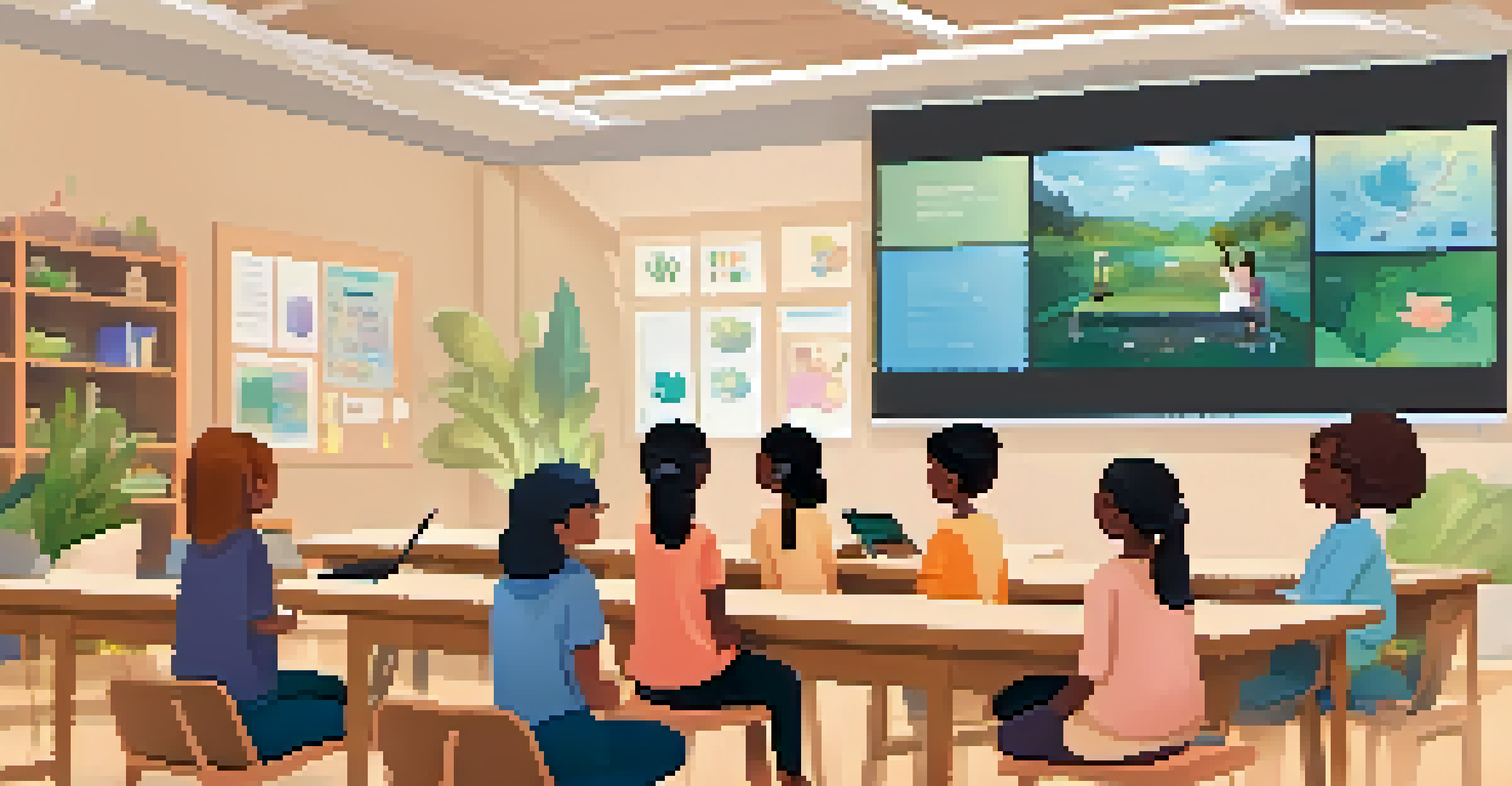Integrating Mindfulness Practices in Remote Education

Understanding Mindfulness in Education
Mindfulness is the practice of being fully present and engaged in the moment. In education, this means encouraging students to focus on their thoughts and feelings without judgment. By integrating mindfulness into remote learning, educators can help students manage stress and enhance their overall well-being.
Mindfulness isn't difficult. We just need to remember to do it.
The concept of mindfulness isn’t just about meditation; it's about cultivating awareness in everyday activities. For students learning from home, this awareness can lead to improved concentration and emotional regulation. It can be particularly beneficial during challenging subjects or stressful periods.
By fostering a mindful approach, educators create an environment where students feel safe to express themselves. This sense of safety is crucial, especially in remote learning settings where isolation can be common. Ultimately, mindfulness helps students develop a more positive relationship with their education.
Benefits of Mindfulness for Remote Learners
Integrating mindfulness practices into remote education offers numerous benefits. For starters, students often experience reduced anxiety and improved focus, which can lead to better academic performance. When students are less stressed, they’re more likely to engage meaningfully with the material.

Moreover, mindfulness can enhance emotional intelligence, allowing students to navigate their feelings more effectively. This emotional awareness not only benefits their academic life but also their personal relationships. As they learn to manage their emotions, they become more resilient individuals.
Mindfulness Enhances Student Focus
Integrating mindfulness practices helps remote learners reduce anxiety and improve focus, leading to better academic performance.
In essence, mindfulness equips students with tools to handle the ups and downs of remote learning. Whether it's through breathing exercises or short mindfulness breaks, these practices can transform their learning experience. By prioritizing mental well-being, educators can foster a more supportive and productive environment.
Simple Mindfulness Techniques for Educators
Educators can start by incorporating simple mindfulness techniques into their online classes. One effective method is the '5-4-3-2-1' grounding exercise, where students identify five things they can see, four they can touch, three they can hear, two they can smell, and one they can taste. This exercise helps students reconnect with the present moment.
The present moment is filled with joy and happiness. If you are attentive, you will see it.
Another technique is the use of guided meditation or breathing exercises at the beginning or end of a class. Just a few minutes of focused breathing can help students center themselves, reducing distractions and enhancing focus. Creating a calm environment sets a positive tone for learning.
Lastly, encouraging students to take mindful breaks during long study sessions can make a significant difference. These breaks can include stretching, short walks, or mindfulness apps. By promoting these practices, educators help students recharge and return to their studies with renewed energy.
Creating a Mindful Learning Environment
A mindful learning environment is crucial for successful remote education. This starts with establishing clear expectations and routines that promote consistency. When students know what to expect, they can feel more secure in their learning space.
In addition, creating a positive digital atmosphere is essential. Educators can encourage respectful communication and collaboration among students, fostering a sense of community. This sense of belonging can alleviate feelings of isolation that often accompany remote learning.
Simple Techniques for Mindfulness
Educators can use easy mindfulness techniques, like grounding exercises and guided meditations, to create a more engaging online learning environment.
Finally, incorporating visual and auditory elements that promote calmness can enhance the learning space. This might include soft music, nature images, or even the use of calming colors during virtual lessons. A thoughtfully designed environment plays a key role in nurturing mindfulness.
Overcoming Challenges in Remote Mindfulness
While integrating mindfulness into remote education is beneficial, it’s not without challenges. One common hurdle is students' resistance or skepticism towards mindfulness practices. Educators can address this by explaining the benefits in relatable terms and gradually introducing techniques.
Another challenge is the distraction of home environments. Students may find it difficult to focus due to noise or interruptions from family members. To combat this, educators can encourage students to create a dedicated study space that minimizes distractions, promoting a more mindful learning experience.
Lastly, maintaining consistent mindfulness practices can be difficult when students are juggling numerous responsibilities. Educators can help by providing resources and reminders for students to practice mindfulness regularly. By making it a priority, mindfulness can become a valuable part of their educational journey.
Engaging Students with Mindfulness Activities
Engaging students in mindfulness activities can make the practice more enjoyable and effective. For instance, educators can organize mindfulness challenges where students track their daily meditation or gratitude practices. This gamified approach encourages participation and creates a sense of community.
Incorporating creative outlets like art or journaling can also enhance mindfulness. Students can express their thoughts and emotions visually or through writing, which promotes self-reflection. These activities can serve as powerful tools for processing feelings and maintaining a mindful mindset.
Creating Supportive Learning Spaces
Establishing clear routines and a positive digital atmosphere fosters a sense of community and security among remote learners.
Moreover, group mindfulness activities can foster connection among students. Virtual group meditations or mindful discussions allow students to share their experiences and support one another. This collaborative approach not only deepens their mindfulness practice but also strengthens their sense of belonging.
Evaluating the Impact of Mindfulness in Remote Learning
To truly understand the effectiveness of mindfulness practices in remote education, it's essential to evaluate their impact. Educators can use surveys or feedback forms to gather insights from students about their experiences. This data can help identify what strategies are working and what might need adjustment.
Additionally, tracking academic performance and emotional well-being can provide valuable information. By observing changes in grades or student engagement, educators can gauge the influence of mindfulness on learning outcomes. This assessment can guide future mindfulness initiatives.

Ultimately, the goal is to create a continuous feedback loop. By regularly assessing the impact of mindfulness, educators can refine their approaches and ensure that they’re meeting the needs of their students. This commitment to improvement fosters a culture of mindfulness that benefits everyone involved.